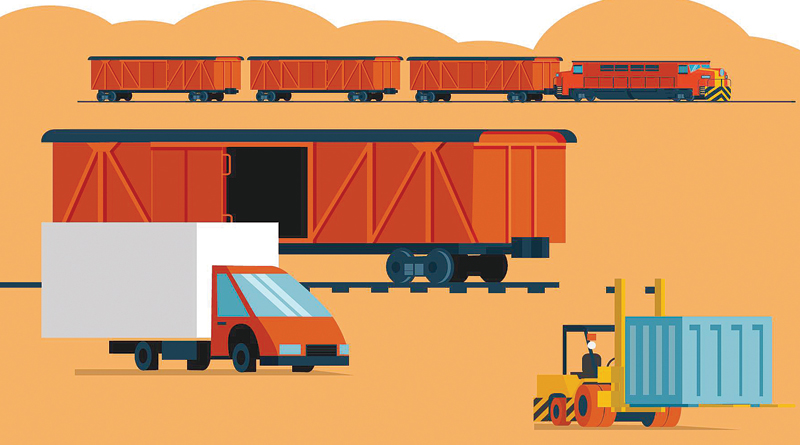

ECONOMIC DIVERSIFICATION: Dedicated railway line for mineral transportation set to be prioritised -
Conrad Prabhu -
MUSCAT, JULY 8 -
Oman Rail’s ambitious plans for a dedicated Mineral Line, designed to unlock the prodigious mineral potential of southern Oman, shifts into gear with the floating of a tender for the appointment of a qualified consultancy firm to survey lands and properties for acquisition along the alignment.
The tender for ‘Land Acqusiiton — Buildings / Lands Inventory Services’ covers two key sections of Segment 4 of the Oman National Railway Project, which now incorporates a full-fledged rail network earmarked for the transportation of mineral commodities from sites in southern Oman to Duqm. The network, dubbed the ‘Mineral Line’, will also ferry oil and gas equipment from the port to oilfields located in the vicinity of the route.
The tender comes on the heels of last month’s Royal Decree designating sections of Segments that fall within the scope of the Mineral Line railway network as parts of a ‘public utility project’ — a label that allows for the acquisition of properties lying along the route, and for compensation in lieu.
Included in the scope of the Royal Decree is Section 4D, which along with other sections of Segment 4 constitute the Mineral Line. At full build-out, the proposed Mineral Line railway could potentially extend a total distance of about 653 kilometres.
According to authorities, the Mineral Line is anticipated to be a single track railway with a 40-tonne axle load with sidings located every 30 kiolometres. The alignment will extend from Thamrait in Dhofar Governorate to the Port of Duqm via the mining hubs of Al Shuwaymiyah and Manhi.
Plans chalked out by Oman Rail — part of Asyad (Oman Global Logistics Group) — originally envisaged the development of the Mineral Line in two stages. Envisioned in Stage 1 is a 377 km length connecting the Port of Duqm with Al Shuwaymiyah and Manji. Another 276 km section is added in Stage 2 connecting mining areas in Thamrait with the junction of Stage 1 at Amal.
As a first step in the establishment of the Mineral Line, Oman Rail aims to appoint a surveying specialist to undertake a topographic survey of land and identify legal ownership of properties that lie along the path of the railway line. Any land owned by individuals or private sector entities through which the alignment of Segment 4D passes will be identified and an inventory of affected property will be prepared showing the size of affected land, type of land use, above ground structures, trees and crops. Interested bidders have until July 20, 2017 to collect tender documents for this contract.
Importantly, the Mineral Line initiative of Oman Rail has been strongly endorsed by the National Programme for Enhancing Economic Diversification (Tanfeedh) as one of over 120 initiatives that have the potential to energise the national economy in the short-term.
Rail connectivity to mining sites will not only fuel the commercialisation of the nation’s prolific mineral wealth, but will also open up the potential of this sector to investment, mineral processing, and job generating activities, says Tanfeedh.
The government-backed agency sees the potential for an integrated minerals-based railway system that can enable the extraction of about 60 million tonnes of minerals per year, as well as stimulate investment in related sectors. The oil industry, which shares the same acreage with that of the mining sector, will also benefit from the potential carriage of around one million tonnes of oilfield goods, chiefly pipes and drilling tools, from the Port of Duqm to oilfield sites annually.
Tanfeedh moots a public-private partnership (PPP) model for the financing of the Mineral Line — an approach favoured by Oman Rail as well. The model envisages a 20 per cent funding contribution from the public sector, with the balance chipped in by the private sector.
Oman Observer is now on the WhatsApp channel. Click here



